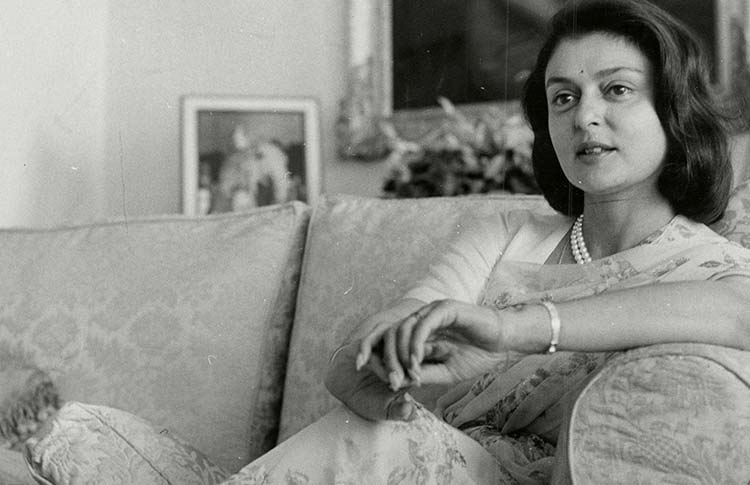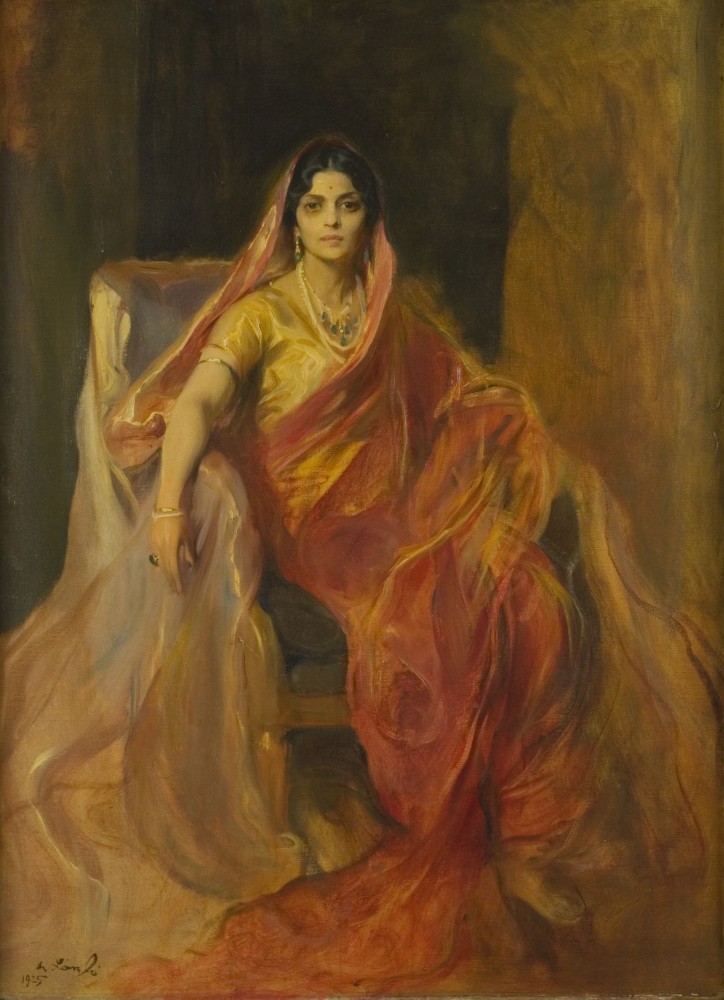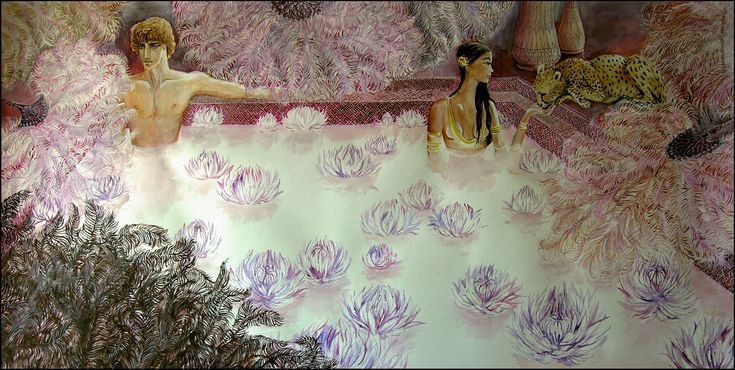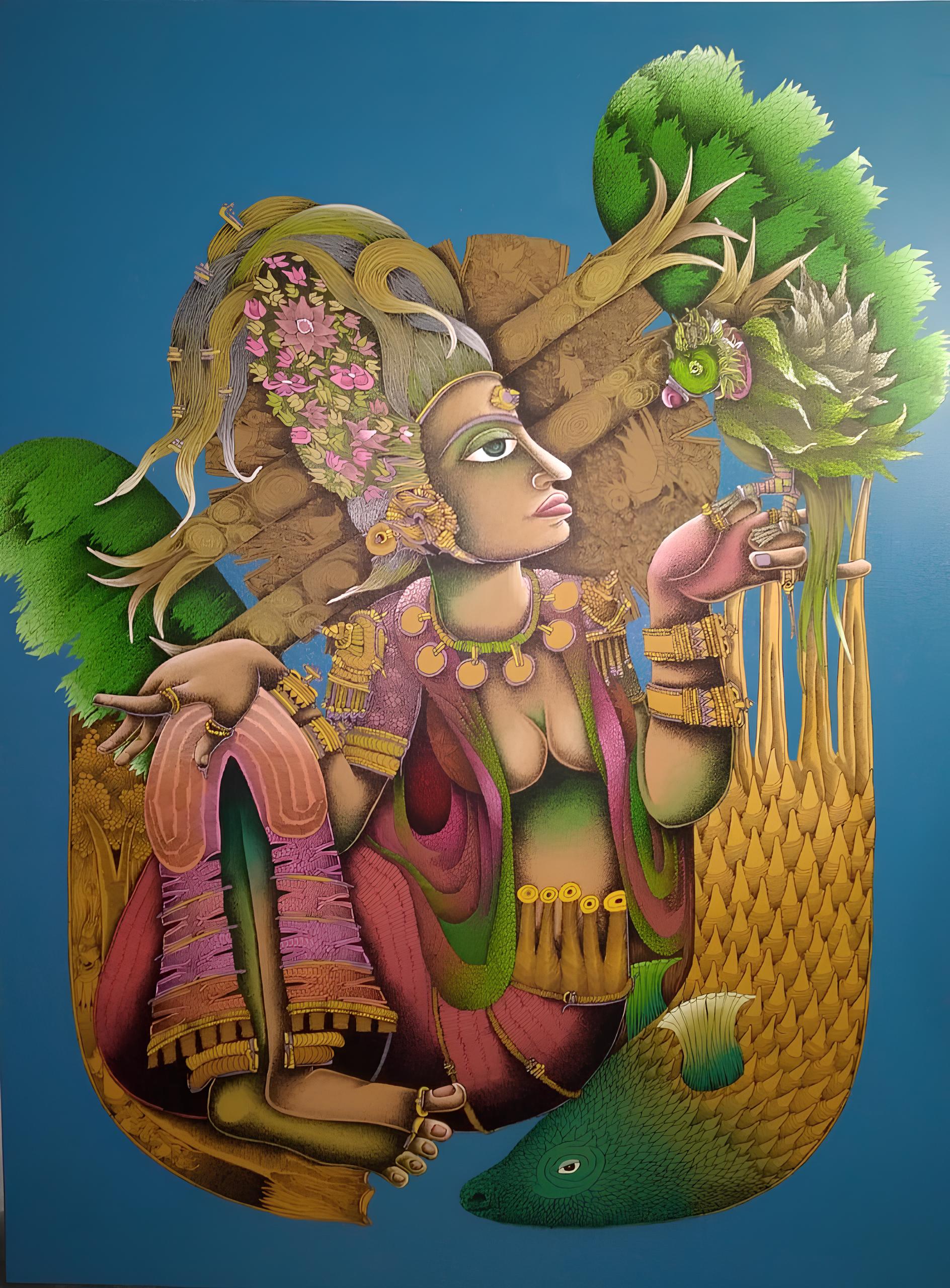Chiffon sarees, with their ethereal grace and delicate drape, have long been revered as a symbol of royalty in India. These exquisite garments, characterised by their lightweight fabric and subtle sheen, have adorned queens and princesses, marking a legacy of regality that transcends generations.
Among the illustrious figures who embraced the elegance of chiffon sarees, Maharani Indira Devi of Cooch Behar stands out as a pioneer and trendsetter. Born in 1892 as Princess Indira Raje of Baroda, she was the only daughter of Maharaja Sayajirao Gaekwad III and Maharani Chimnabai. Her formative years unfolded within the opulent confines of the Lakshmi Vilas Palace in Baroda, providing a backdrop of splendour for her upbringing.
Maharani Indira Devi distinguished herself not only through her royal lineage but also as one of the first Indian princesses to pursue a Western education. Her progressive outlook and cosmopolitan influences set the stage for her to become a trailblazer in matters of style and sophistication. Rather than succumbing to societal expectations and allowing her husband’s death to define her existence, Maharani Indira Devi chose to reclaim her power and embark on a remarkable journey that defied traditional norms. Rather than settling into a conventional life in Cooch Behar, she made a bold move to London, signalling her determination to chart her course.
Maharani Indira Devi
Defying the stereotypical image of a Hindu widow, Maharani Indira Devi opted for a wardrobe dominated by white-colored sarees. During a transformative trip to France, she encountered chiffon fabric in Lyon, a moment that sparked an immediate infatuation. Recognising its potential as an exquisite saree material, she commissioned the creation of a nine-yard white chiffon saree from Lyon, setting in motion a trend that would captivate women across the nation.
Maharani Indira Devi’s fashion sensibilities were not confined to the saree alone. To enhance her ensemble, she added simple borders to the chiffon sarees and paired them with diamond-studded shoes and a string of pearls. The Maharani played a pivotal role in popularising delicate chiffon sarees, often complemented by gem-studded shoes crafted by the renowned Salvatore Ferragamo. Every saree in Maharani Indira Devi’s extensive wardrobe was custom-made in French looms, showcasing a palette dominated by pastel hues. Her signature look, featuring the white chiffon saree, a pearl necklace adorning her neck, and gem-studded shoes, catapulted her into the limelight. This distinctive combination earned her recognition as one of the ten most beautiful women in the world, according to the esteemed fashion magazine Vogue.
Maharani Gayatri Devi, the Last Maharani of Jaipur, seamlessly carried forward the legacy of redefining royal fashion, leaving an indelible mark on Indian aristocracy. Revered as one of the most stunning queens, she etched a timeless image in the history of Indian royalty. Born on May 23, 1919, in London, Maharani Gayatri Devi rose to prominence as the third Maharani consort of Jaipur from 1940 to 1949, marrying Maharaja Sawai Man Singh II. Following her husband’s strategic decision for the Jaipur State to join the Union of India and her stepson’s assumption of the title in 1970, she earned the distinguished title of Maharani Gayatri Devi, Rajmata of Jaipur. Renowned for her impeccable style and elegance, she became a revered fashion icon.
Much like her mother, Maharani Indira Devi, Maharani Gayatri Devi made a lasting impact on the realm of fashion, notably contributing to the popularity of chiffon sarees adorned with floral motifs. Her distinct fashion choices and refined taste positioned her as a trailblazer in the fashion landscape of Indian royalty.
In an era when Indian royals embarked on lavish shopping sprees across European capitals, Maharani Gayatri Devi’s discerning eye for quality and style became legendary. Her affinity for chiffon originated in Paris, a city that served as a wellspring of inspiration. Chiffon, traditionally crafted from silk, symbolising opulence, presented an intriguing paradox given its name’s origin from an old French word meaning ‘rag.’ Maharani Indira Devi of Cooch Behar pioneered the integration of chiffon into traditional sarees, marking a departure from convention.
The 1930s witnessed the surge in popularity of chiffon, transitioning from silk to more affordable nylon, democratising its accessibility. Maharani Gayatri Devi, with her innate sense of style, transformed the draping of chiffon sarees into a signature, romantic, and dreamy look, a style that became synonymous with her persona.
Maharani Gayatri Devi
Renowned Indian fashion designer Sabyasachi paid a fitting tribute to Maharani Gayatri Devi by creating five limited-edition sarees inspired by her for his Spring/Summer 2013 collection. Adhering to the Maharani’s preferences, these sarees featured soft creams, pinks, and blues, meticulously crafted from fine French fabrics such as organza, satin, and tulle. Paired with satin blouses boasting ten-inch sleeves, these creations paid homage to Maharani Gayatri Devi’s enduring influence on Indian royal fashion, solidifying her legacy across generations.
The enduring influence of Maharani Indira Devi and Maharani Gayatri Devi extends far beyond their lifetimes, firmly establishing chiffon sarees as the quintessential marker of royalty in India. These visionary women, with their distinct fashion sensibilities and audacious choices, laid the foundation for a legacy that continues to resonate in the modern era. Their groundbreaking embrace of chiffon in traditional attire paved the way for subsequent generations of Indian princesses to carry forth this regal tradition. Among these contemporary torchbearers, prominent names include Princess Diya Kumari of Jaipur and Princess Shivangini Raje Gaekwad of Baroda. These modern-day princesses, inspired by the timeless elegance of their predecessors, have seamlessly woven chiffon sarees into their wardrobes, ensuring that the legacy initiated by Maharani Indira Devi and Maharani Gayatri Devi remains an integral part of India’s cultural and sartorial heritage. Through their graceful embrace of chiffon, these princesses continue to embody the essence of regality, connecting the past with the present and preserving a rich tradition for generations to come.
Words by Esha Aphale.








